Isdal Woman: The mystery death haunting Norway for 46 years
- Published
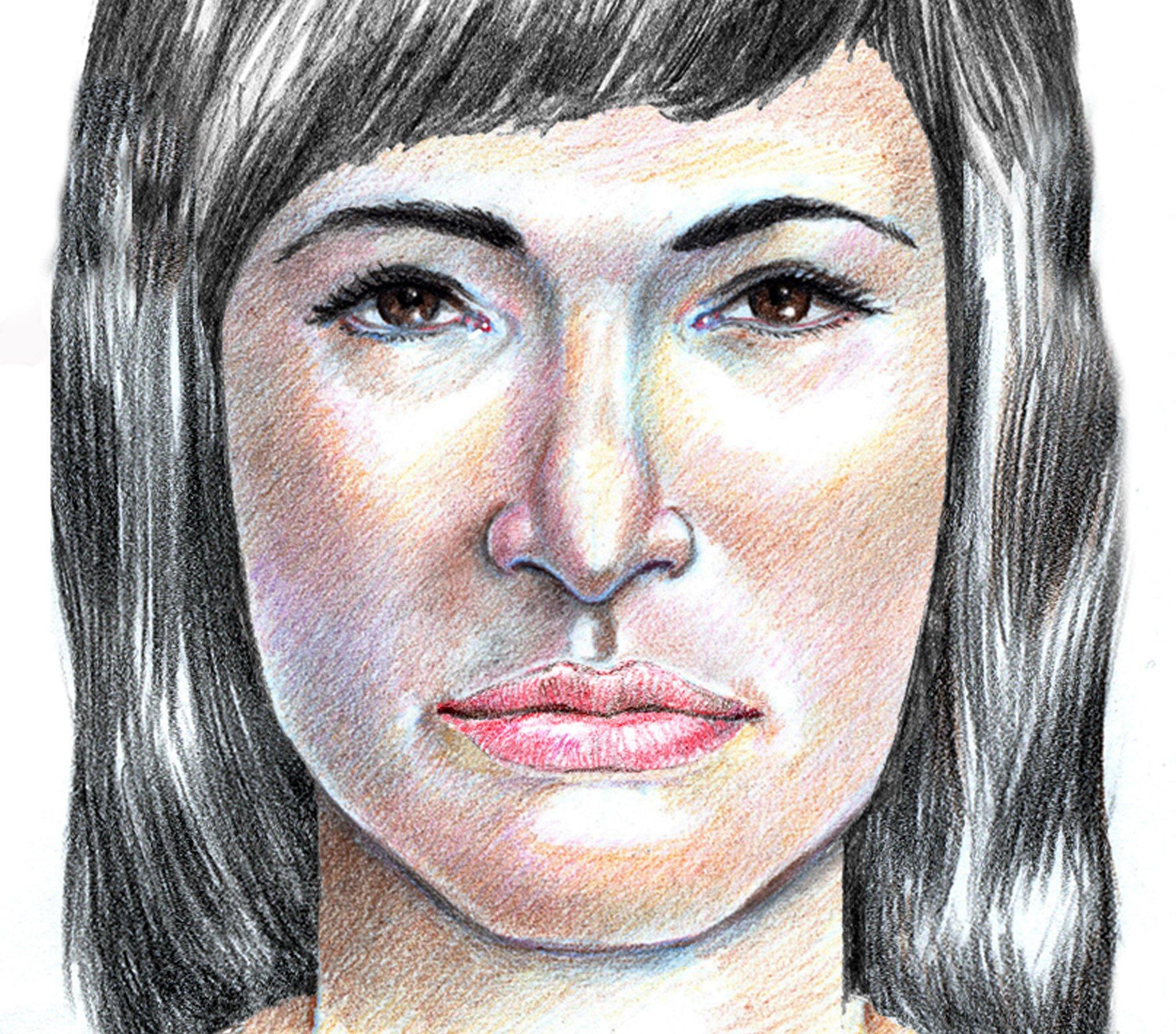
It's a mystery that has intrigued Norway for nearly 50 years.
In November 1970, the badly burnt body of a woman was found in a remote spot in Norway's Isdalen valley.
Someone had cut the labels off her clothes, and scraped distinctive marks off her belongings - as if to stop her from being identified.
And as police started investigating her death, they uncovered a trail of coded messages, disguises, and fake identities - but never cracked the case.
Forty-six years later, Norwegian police and NRK journalists, external have decided to reopen the investigation.
This is the story of the Isdal Woman - and the perplexing trail of clues she left behind.
WARNING: This article contains one graphic image
Clue one: The body in 'Death Valley'

Isdalen Valley is a short drive from the west-coast city of Bergen
On the morning of 29 November 1970, a man and his two young daughters see a body in Isdalen Valley.
The corpse is sprawled across some rocks - with its arms extended in a "boxer" position, typical of bodies that have been burnt.
Isdalen is known to some locals as "Death Valley" - it was a site where people committed suicide in medieval times, and, in the 1960s, some hikers had fallen to their deaths while trekking in the fog.
But the woman does not appear to be a normal hiker.

"It was out of the way - it was an unusual place to walk," Carl Halvor Aas, a police lawyer who was one of the first officers to be called to the scene, recounts to the BBC.
He remembers "a strong smell of burnt flesh".
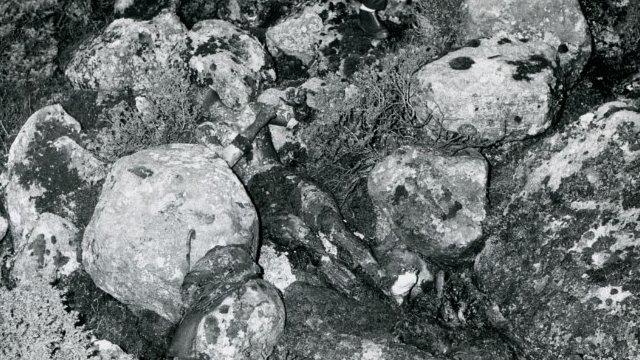
"The body was burned all over the front," including "the face and most of her hair", he says - but strangely it was not burnt on the back.
"It looked like she had thrown herself back" from a fire, he says, adding that she was so badly burnt they could not imagine what she originally looked like.
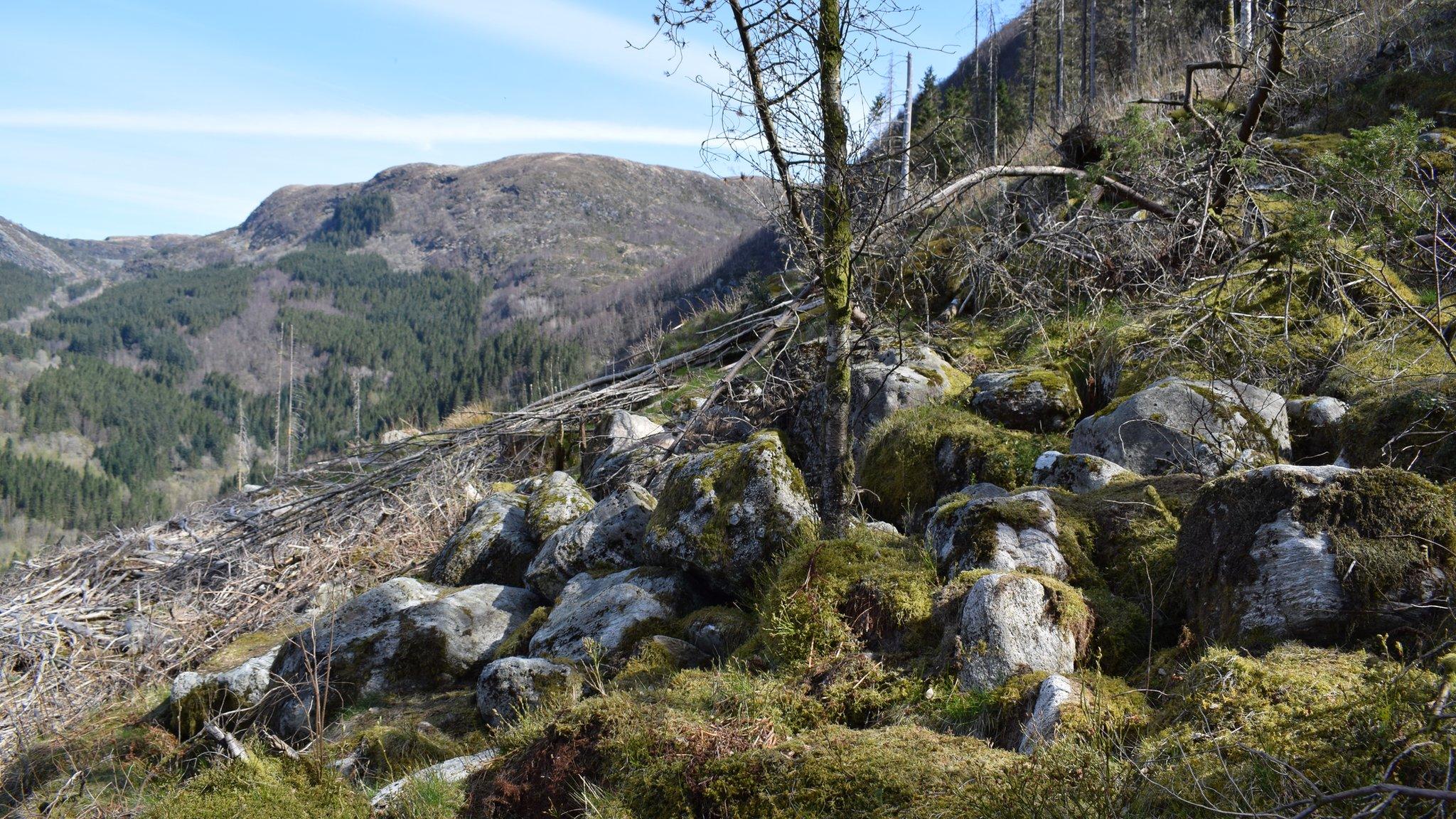
This is believed to be the spot where the Isdal Woman was found
The scene is cold by the time Carl arrived, so he cannot tell how long the body has been there for.
And how did the woman end up on fire?
Clue two: The objects
Police find a number of objects at the scene, including jewellery, a watch, a broken umbrella and some bottles.
But it is the positioning of the objects that leaves the strongest impression on Tormod Bønes, one of the forensic investigators.
The woman is not wearing the watch or her jewellery - instead, they have been placed beside her.
"The placement and location of the objects surrounding the body was strange - it looked like there had been some kind of ceremony," he says.
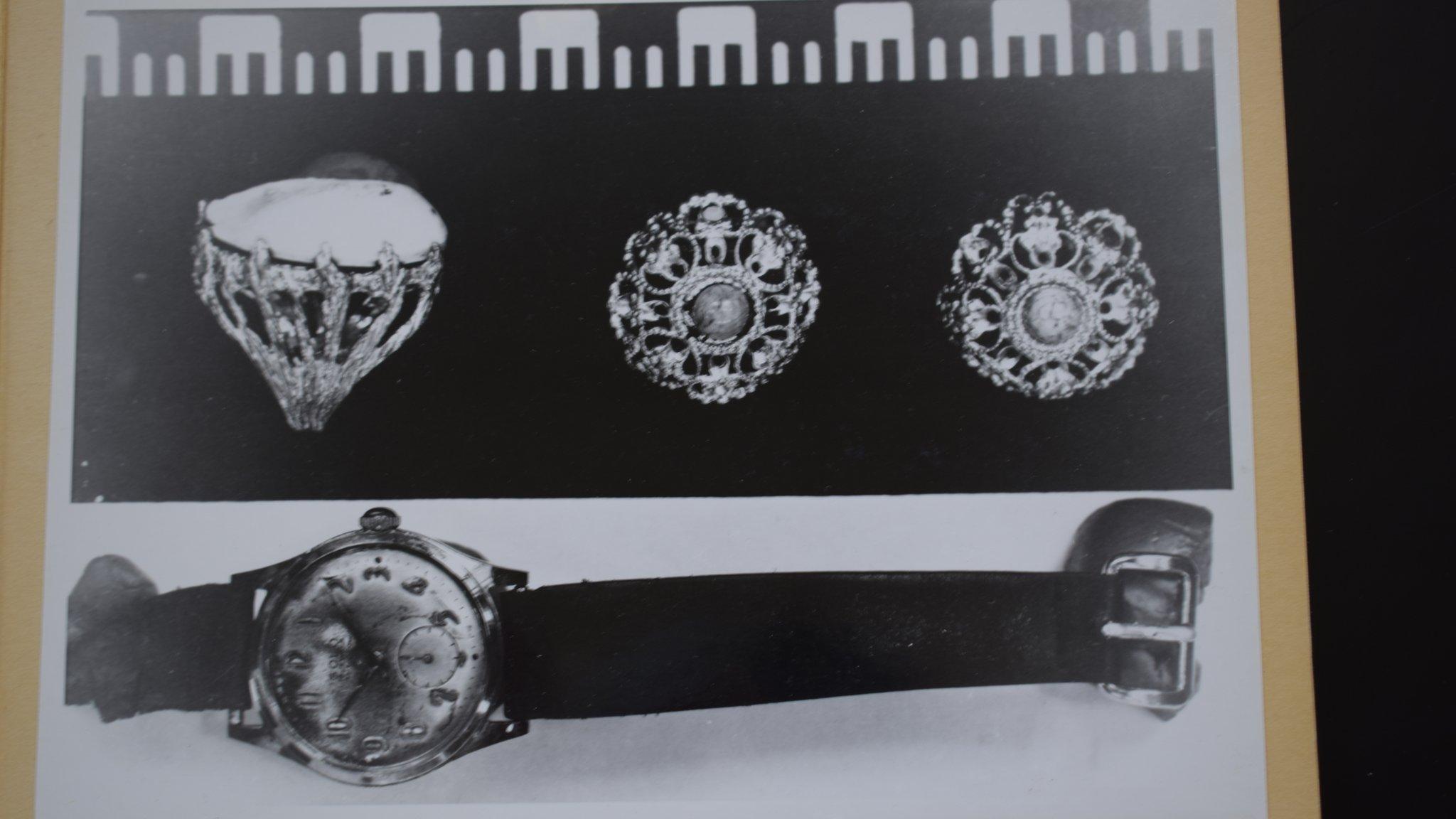
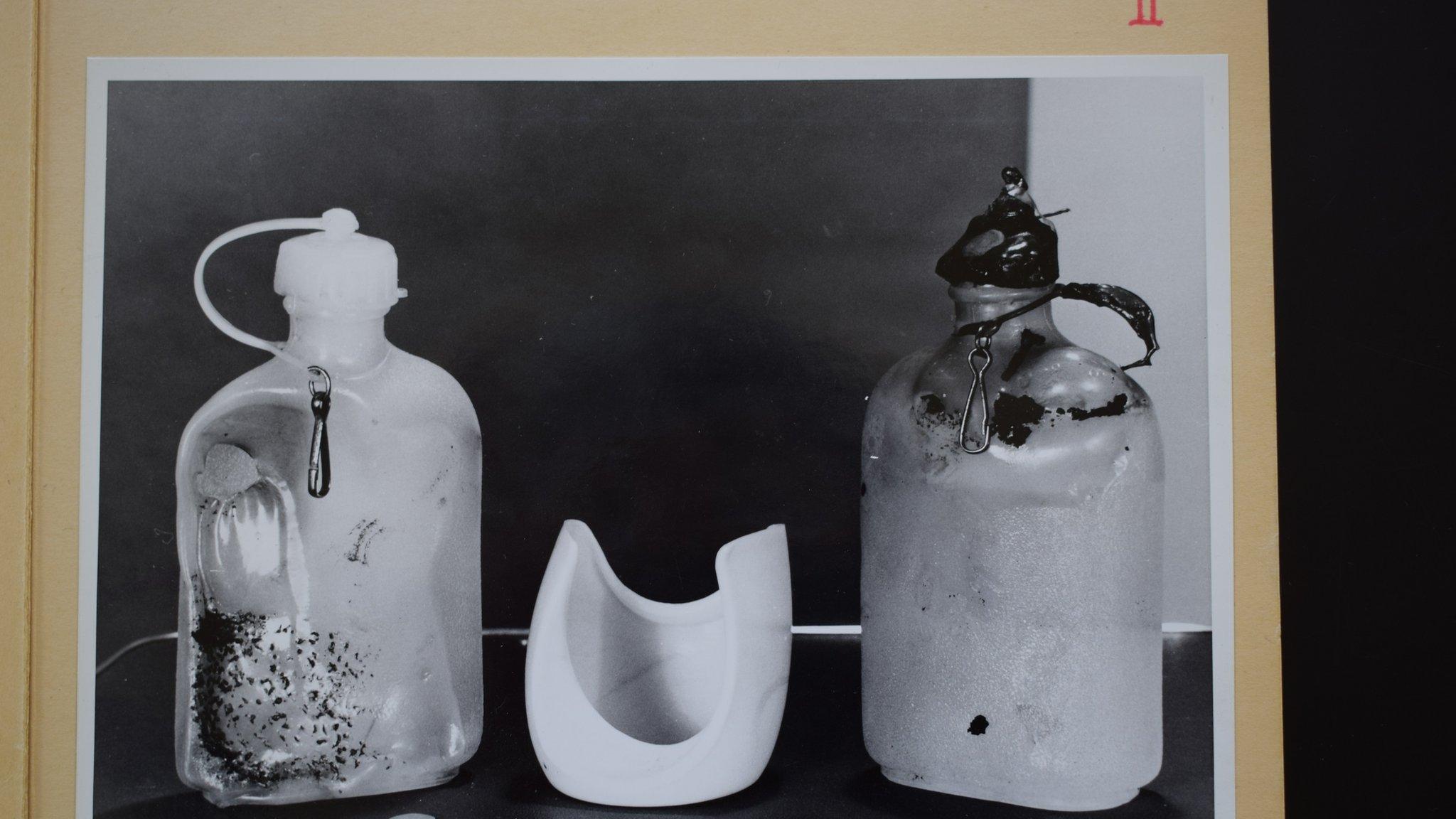
Police also find the remains of a pair of rubber boots and nylon stockings.
"She had been wearing a lot of clothes - of synthetic materials - and all the clothes had been heavily burned," says Tormod.
Adding to the mystery is the fact that the production labels have been cut off her clothes and rubbed off the bottles at the scene.
Police find nothing at the scene to indicate who the woman was.
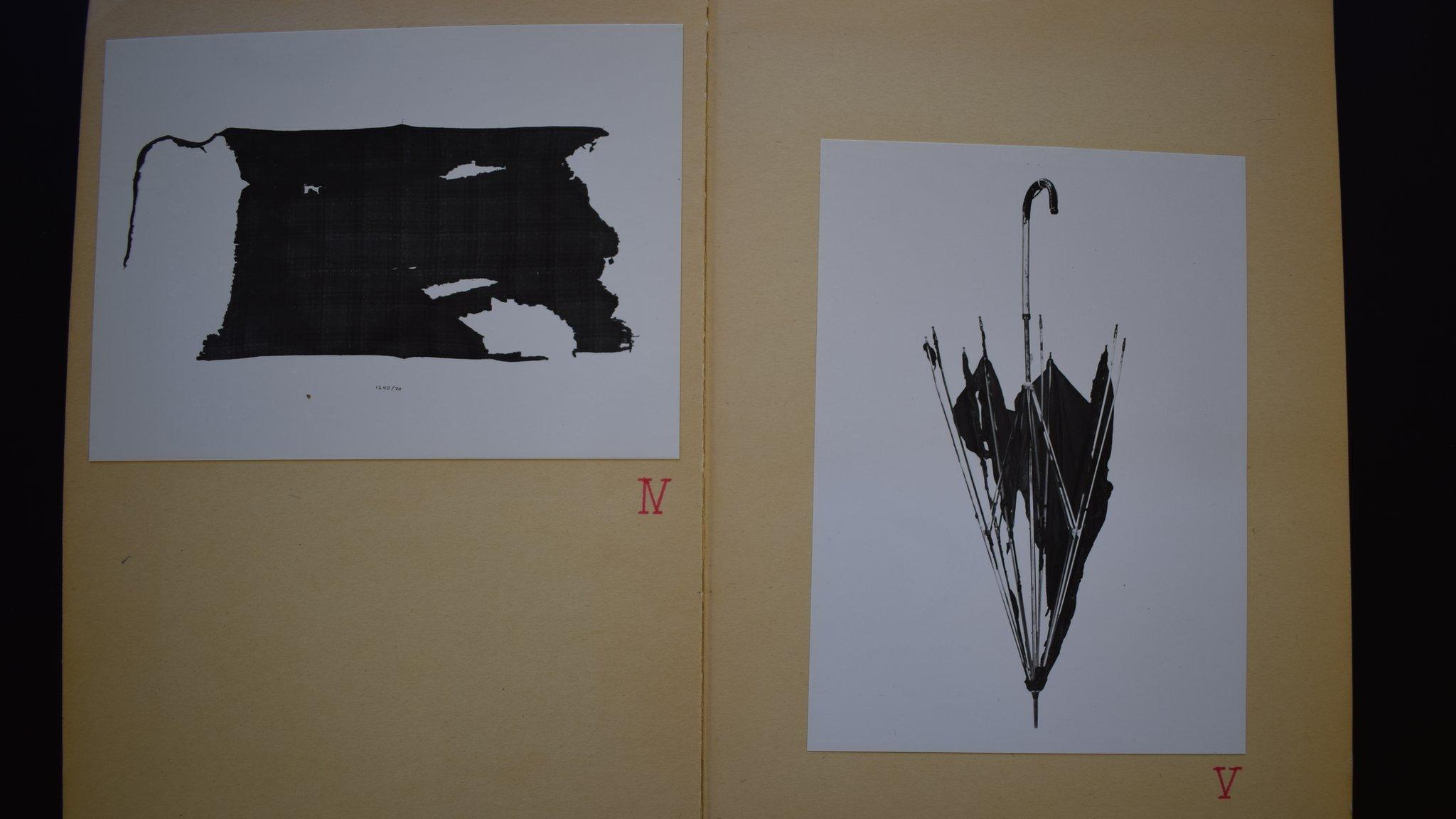
The remains of an item of clothing and an umbrella found at the scene
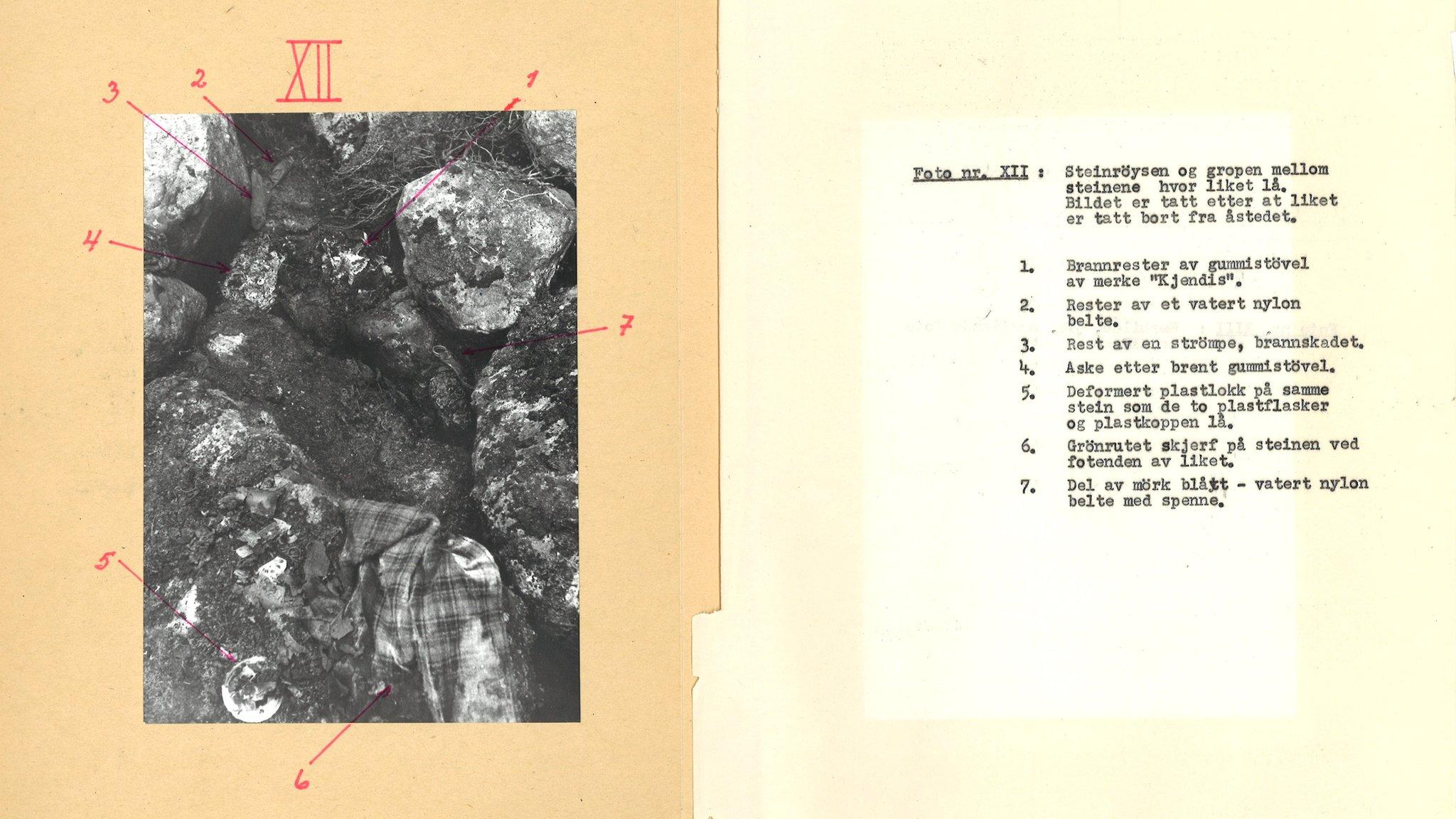
Police found items of clothing, drinking bottles, the remains of nylon stockings and pieces of jewellery at the scene
Police issue an appeal for eyewitnesses. They say the woman was about 164cm (5ft 4.5 inches) tall, with "long brownish-black hair", a small round face, brown eyes, and small ears. She appeared to be aged between 25 and 40 years, and wore her hair "in a ponytail tied with a blue and white print ribbon" at the time of death.
Without a name, the woman becomes known as the Isdal Woman.
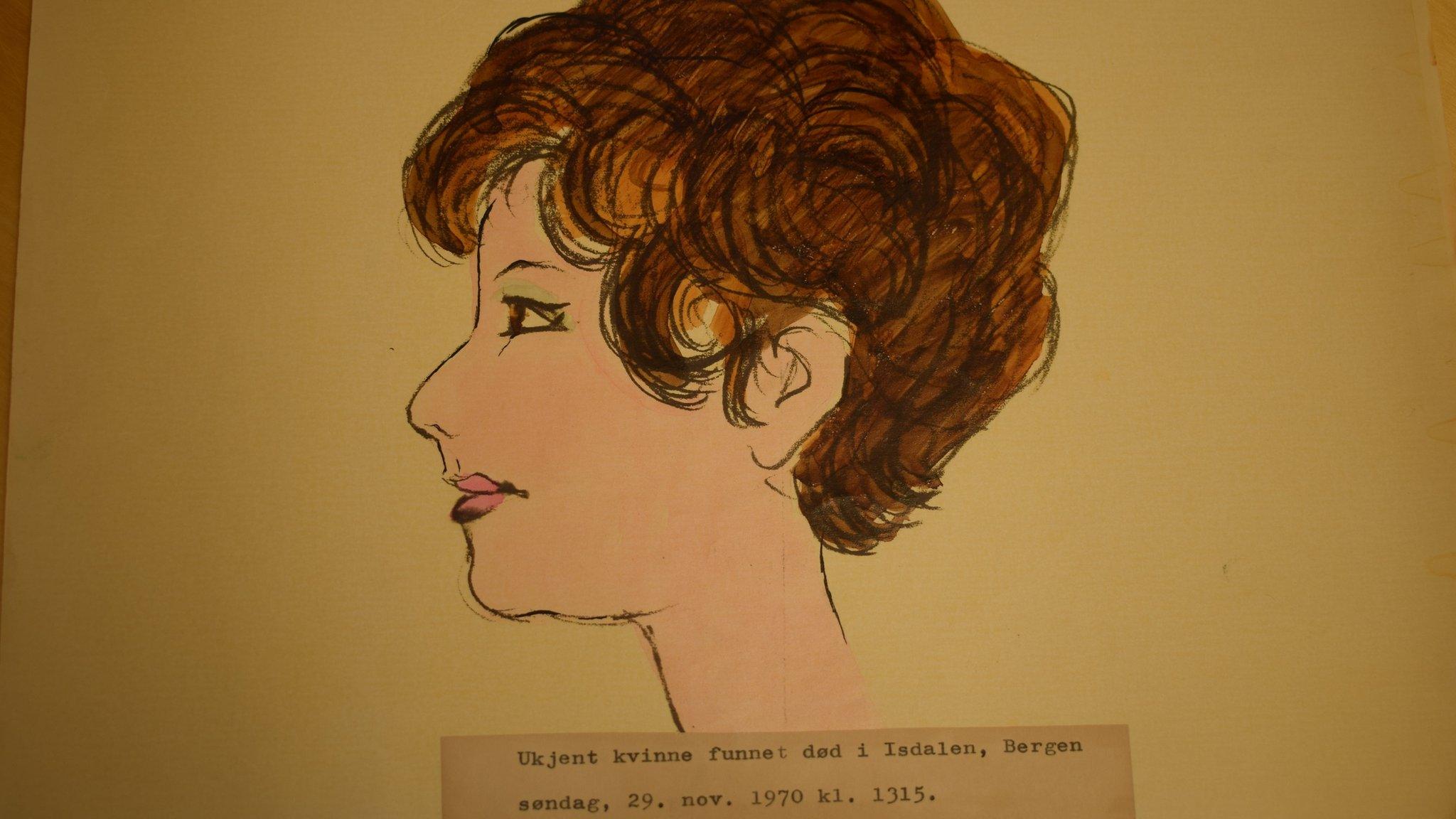
An artist's impression of the Isdal Woman, distributed by police
The story is big news in Bergen - a peaceful town with a low crime rate.
A few days later, police find a clue.
Clue three: The suitcases
They find two suitcases at Bergen railway station's left luggage department.
One of the suitcases contains prescription-free glasses - and a fingerprint on one of the pairs matches the woman's.

The suitcases also contain:
Clothes
Several wigs
German and Norwegian money - and Belgian, British and Swiss coins
A comb and a hairbrush
Cosmetics
Some teaspoons
A tube of eczema cream
Initially, police "were very optimistic because they thought the suitcases would help them identify the body," says Tormod.

But soon, they realise that "all the labels that could have identified the woman, her clothes or belongings, had been removed".
Even the prescription sticker on the eczema cream, which would have shown the name of the doctor and the patient, has been scraped off.
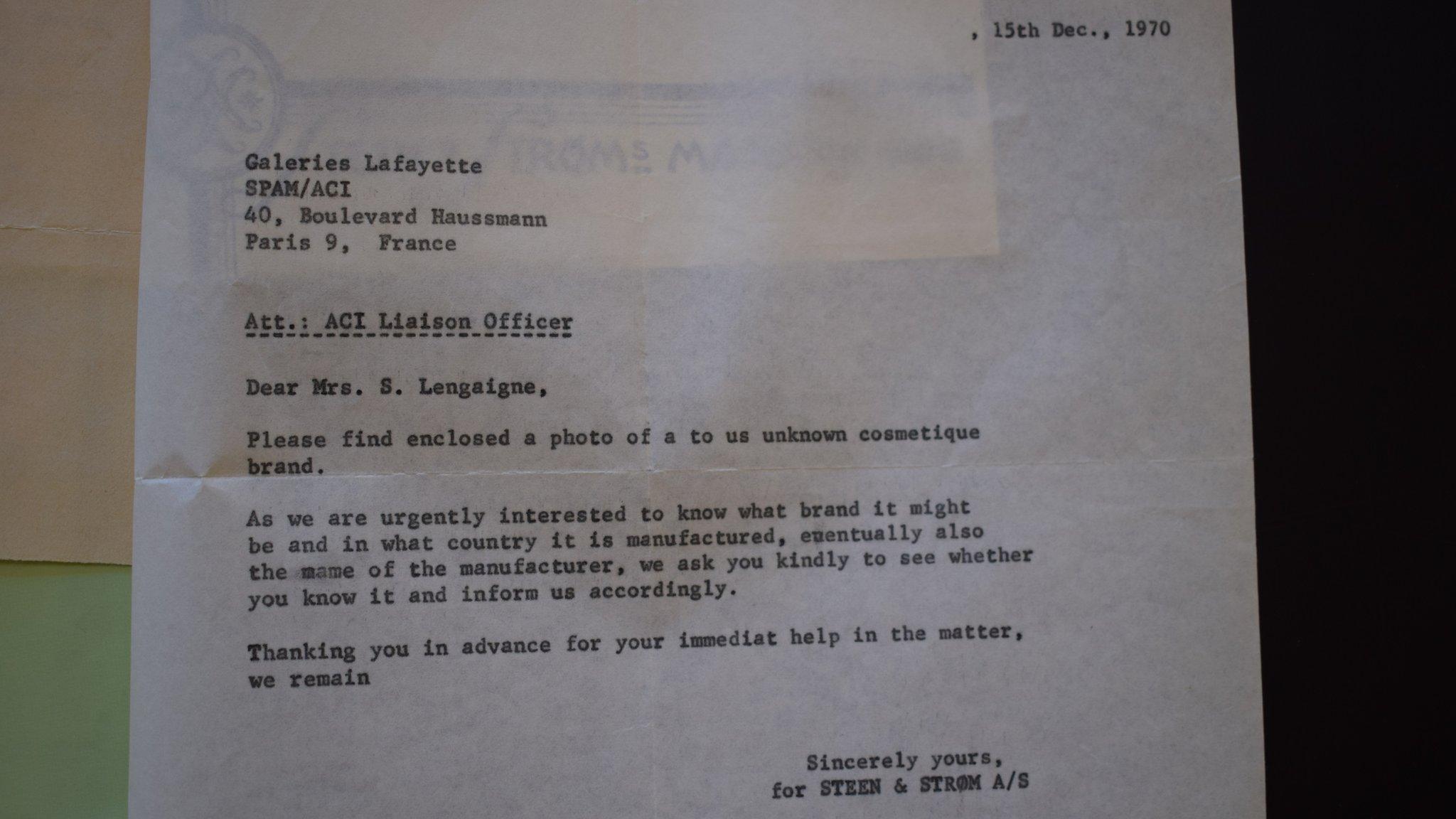
Police try hard to trace the woman's belongings. They even contact several major department stores abroad, including Galeries Lafayette in Paris, to see if the stores recognise any of packaging on the woman's make up.
None of the department stores can find a match.
There is also a mysterious coded note in the case - which police will not crack until a while later (see clue five).
There is one important piece of evidence in the suitcase - a plastic bag from Oscar Rørtvedt's Footwear Store - a shoe shop in Stavanger.
The owner's son, Rolf Rørtvedt, remembers selling a pair of rubber boots to "a very well dressed, nice-looking woman with dark hair".
The boots he sold her appear to match the boots found on the body in the Isdalen valley. Police believe that the umbrella found near the body was also bought from the store.
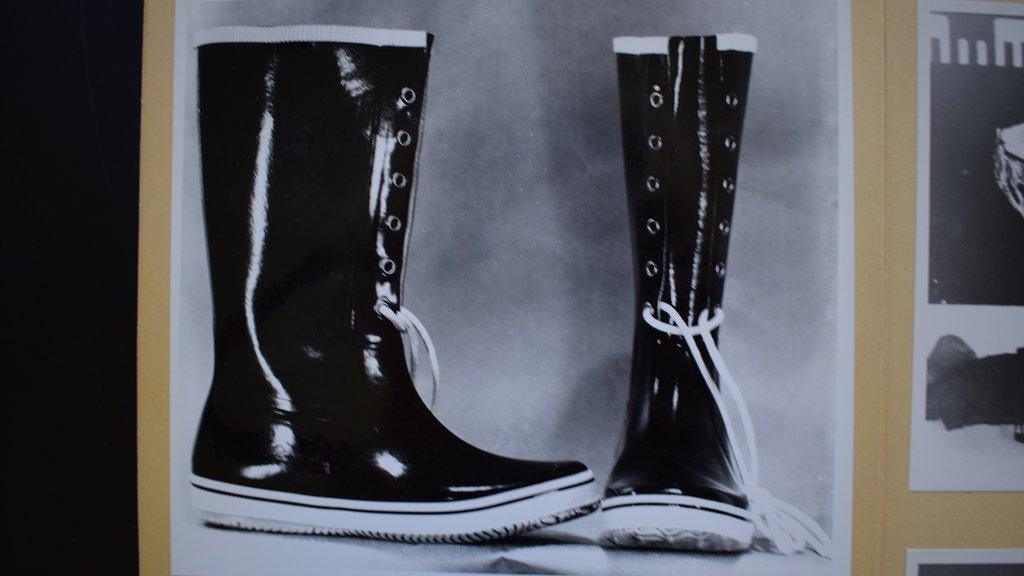
The boots sold at Oscar Rørtvedt's Footwear Store were similar to the pair found at the Isdalen Valley
Rolf says the woman had made an impression on him because she "took a long time" choosing her boots - much longer than the average customer.
She spoke English, with an accent, and had "a calm and quiet expression", he tells the BBC.
He also recalls a strong smell emanating from the woman - which, later, he thinks may have been garlic.
Using his description, police are able to trace the woman to St Svithun hotel nearby - where she checked in as Fenella Lorch.
The problem? Fenella Lorch wasn't her real name.
Clue four: The hotel forms
It emerges that the woman had stayed in several hotels in Norway - using different aliases. And since most hotels required guests to show a passport and fill in a check-in form, this means she would have had several fake passports.


On this form, the woman claimed she had arrived from London
Police find the woman had stayed in the following hotels, under these names:
Genevieve Lancier, from Louvain, stayed in Viking Hotel, Oslo from 21-24 March 1970
Claudia Tielt, from Brussels, stayed in Hotel Bristol, Bergen from 24-25 March
Claudia Tielt, from Brussels, stayed in Hotel Skandia, Bergen from 25 March to 1 April
Claudia Nielsen, from Ghent, stayed in KNA-Hotellet, Stavanger from 29 -30 October
Alexia Zarne-Merchez, from Ljubljana, stayed in Neptun Hotel, Bergen from 30 October to 5 November
Vera Jarle, from Antwerp, stayed in Hotel Bristol, Trondheim, from 6-8 November
Fenella Lorch, stayed in St Svithun Hotel, Stavanger from 9 to 18 November
Ms Leenhouwfr, stayed in Hotel Rosenkrantz, Bergen from 18 - 19 November
Elisabeth Leenhouwfr, from Ostend, stayed in Hotel Hordaheimen, Bergen from 19-23 November
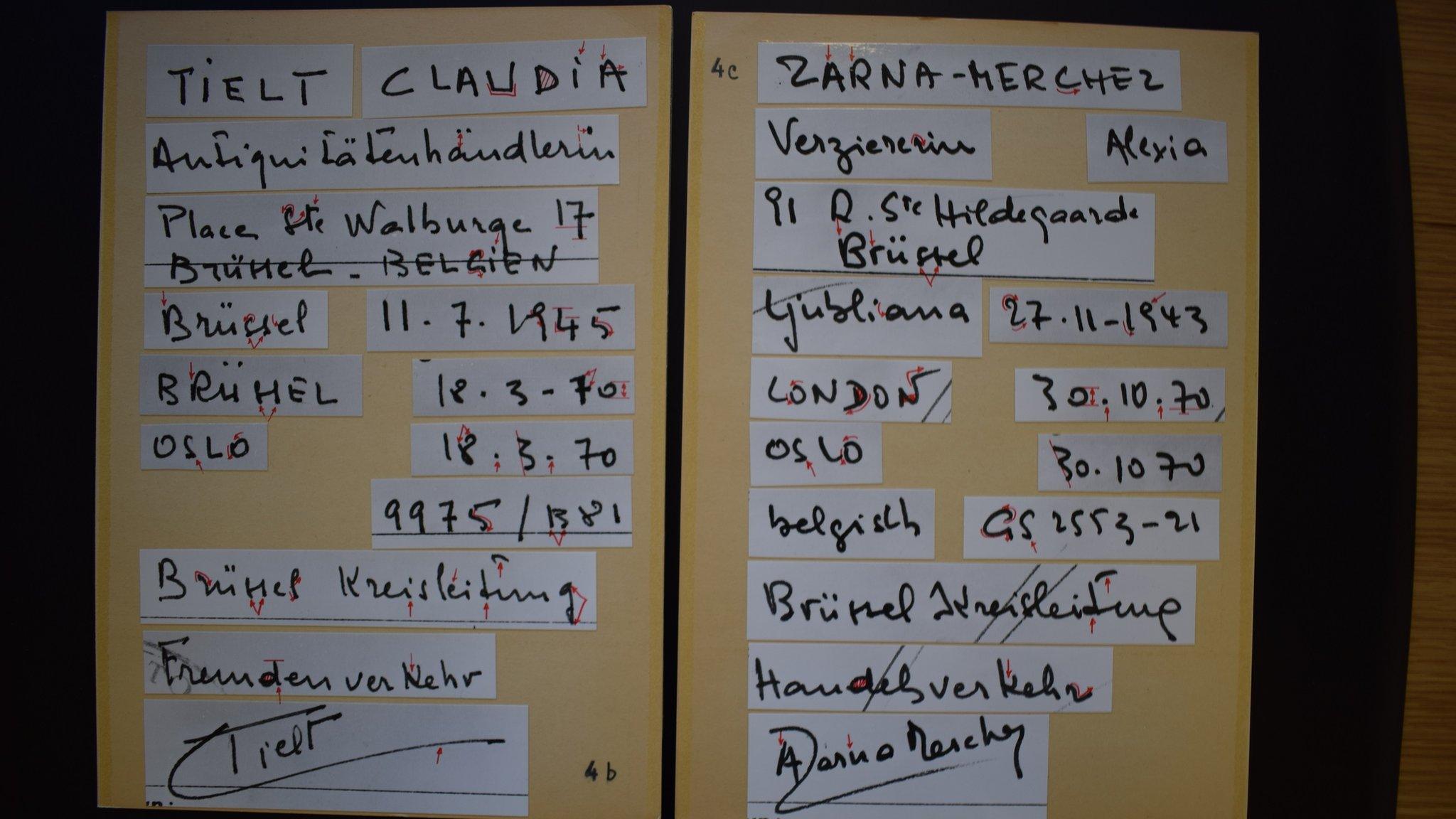
Police matched the different forms together by conducting handwriting analysis

This headline reads: "The woman in Isdalen had at least six different aliases"
The woman left a strong impression on Alvhild Rangnes, who was a 21-year-old waitress at Hotel Neptun at the time.
"My first impression of her was one of elegance and self-assuredness," she tells the BBC.
"She looked so fashionable - I wished to be able to mimic her style. In fact, I remember her winking at me… from my perspective it felt as though she thought I had been staring a bit too much at her."
"On one occasion while I was serving her, she was in the dining hall, sitting right next to - but not interacting with - two German navy personnel, one of which was an officer."
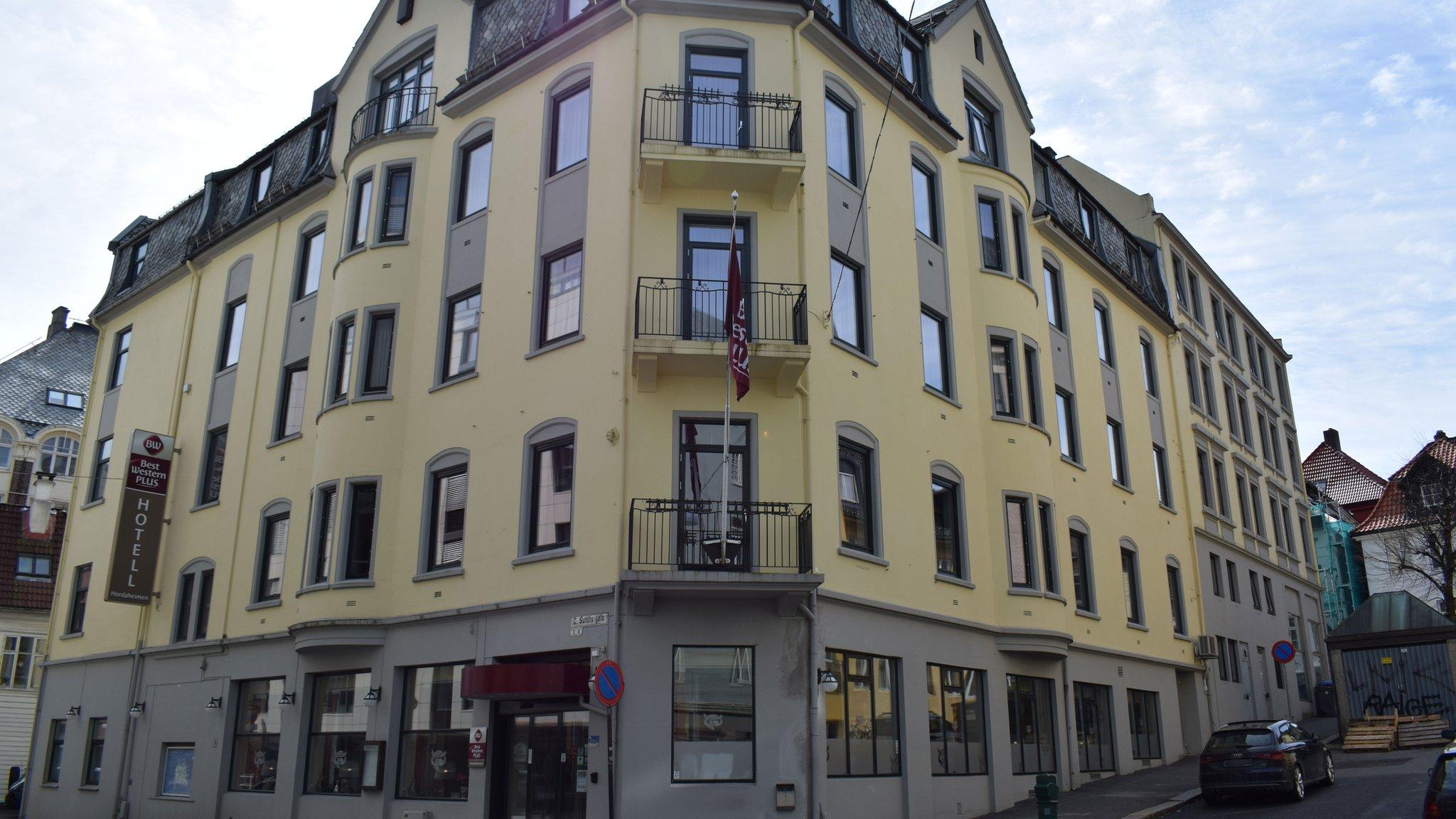
The woman's final stay was in the Hotel Hordaheimen
Police question several hotel staff who met the Isdal Woman - including Alvhild.
They learn that, in addition to speaking English, the woman also used some German phrases.
They also learn that the woman often requested a change of room - on one occasion, she asked to change rooms three times.
Clue five: The note
By now, there are several rumours that the woman was a spy. There weren't too many foreign tourists in Bergen then - and the fact the woman seemed wealthy, and well-travelled, sparked a lot of speculation.
"This was during the Cold War, and there were definitely a lot of spies in Norway, including Russian spies," says Gunnar Staalesen, a Bergen-based crime author who was a university student at the time.
There were also Israeli agents operating in Norway - as shown three years later, when Mossad agents killed a man in Lillehammer they had mistaken for a terrorist, he adds.
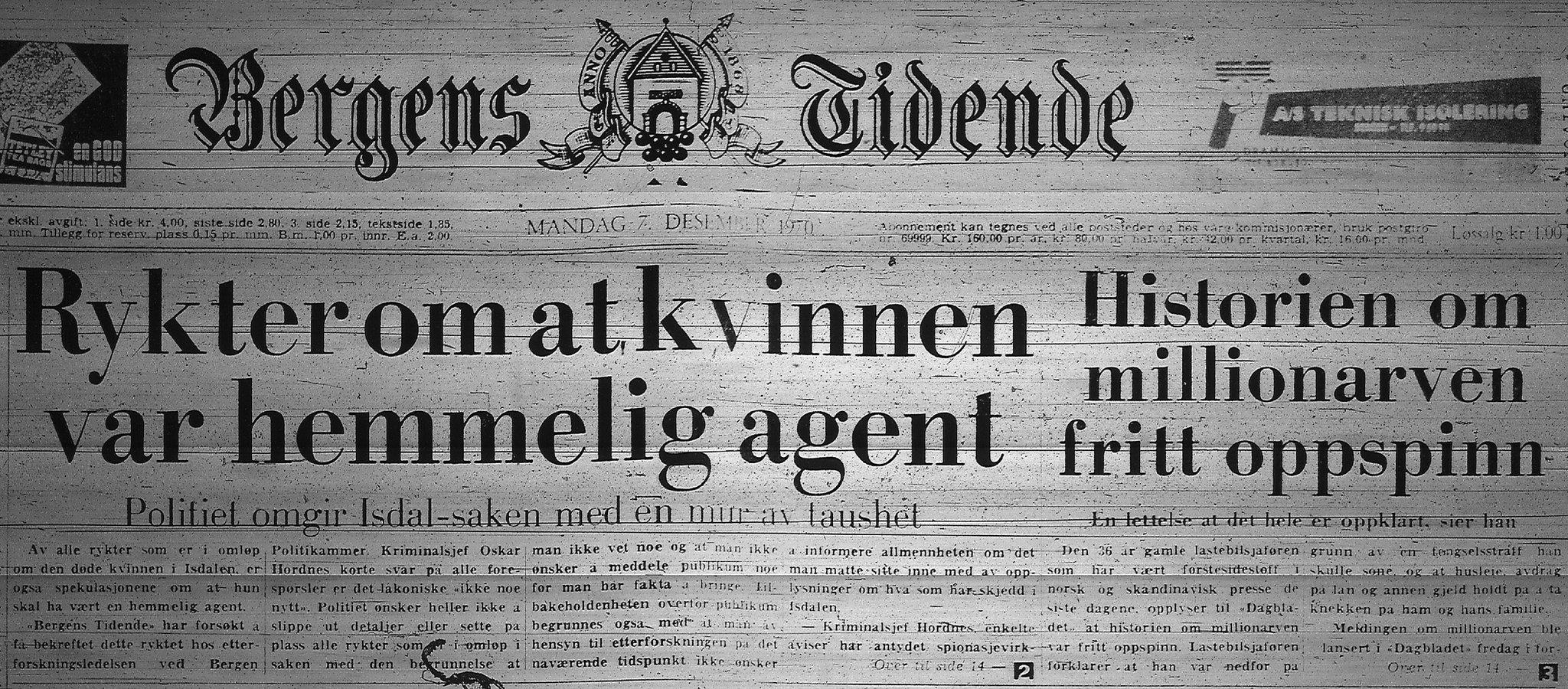
This headline reads: "Rumours say the woman was a secret agent"
Norwegian intelligence services are investigating too - but will not admit it until decades later.
According to NRK, security services were interested in reports that the woman had been seen observing the military test out new rockets in western Norway - but there weren't any clear conclusions from their investigation reports.
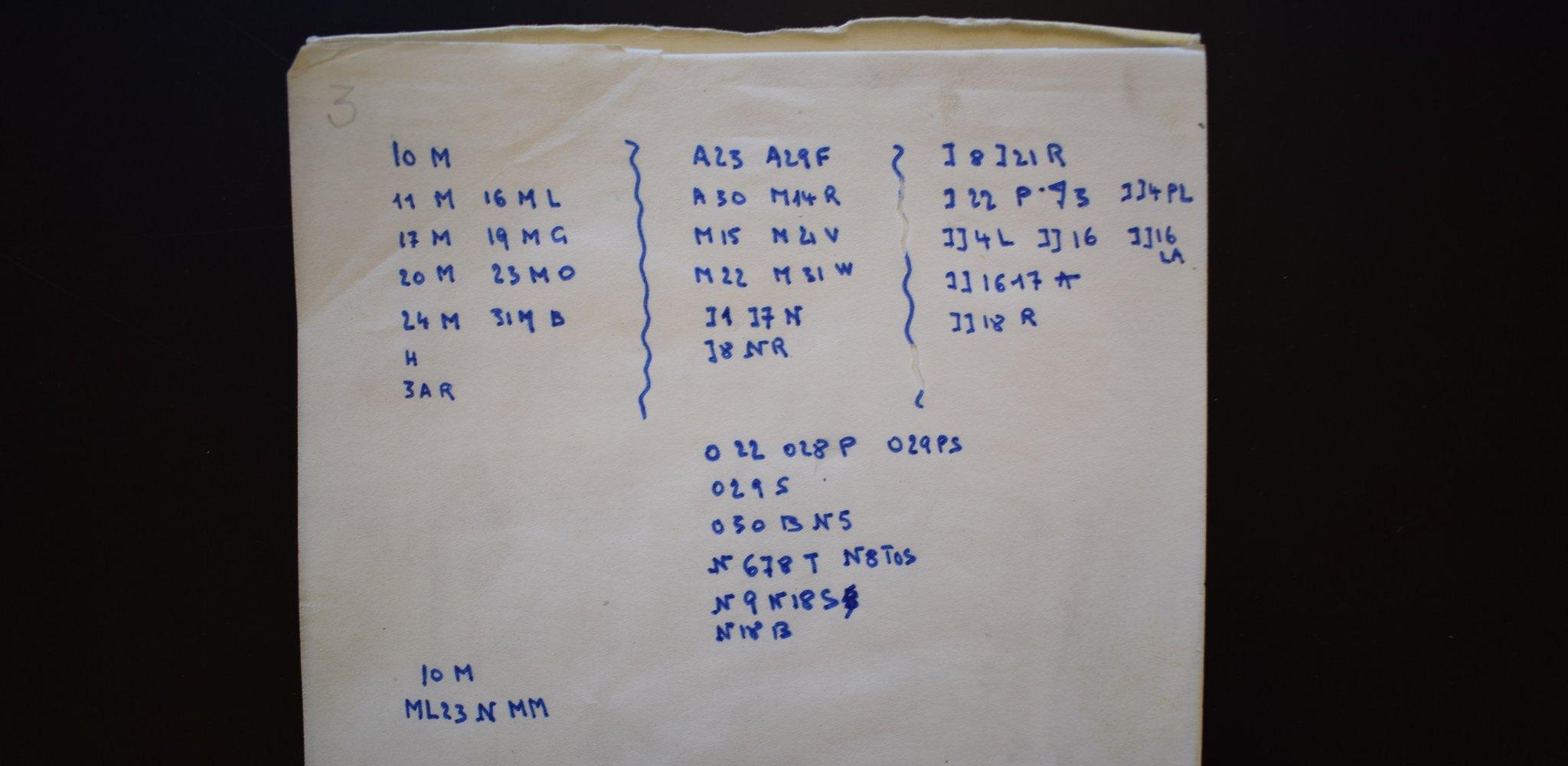
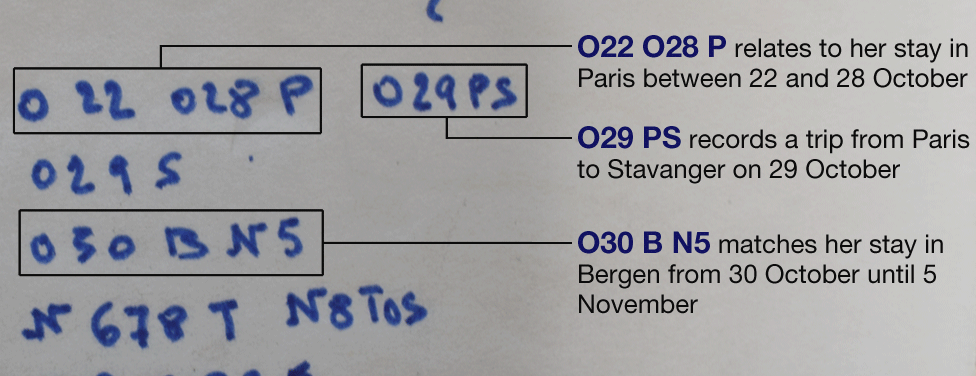
Police eventually crack some of the coded note - but it doesn't provide any evidence that she's a spy.
Instead, it appears to be a record of the places the woman visited. For example, O22 O28 P are dates (22-28 October) she was in Paris, O29PS is the day she travelled from Paris to Stavanger, O29S matches the date she arrived in Stavanger (29 October), and O30BN5 matches her stay in Bergen from 30 October to 5 November.
Police send a description of the woman, and sketches of what she may have looked like, to several police forces abroad. But none of them say they can identify the woman.

Clue six: The autopsy
Meanwhile, investigators complete an examination of the woman's body.
They find an unexplained bruise on the right side of her neck, that could have been the result of a blow or a fall. There are no signs that the woman had been ill.
The autopsy also finds that the woman had never been pregnant or had a child.
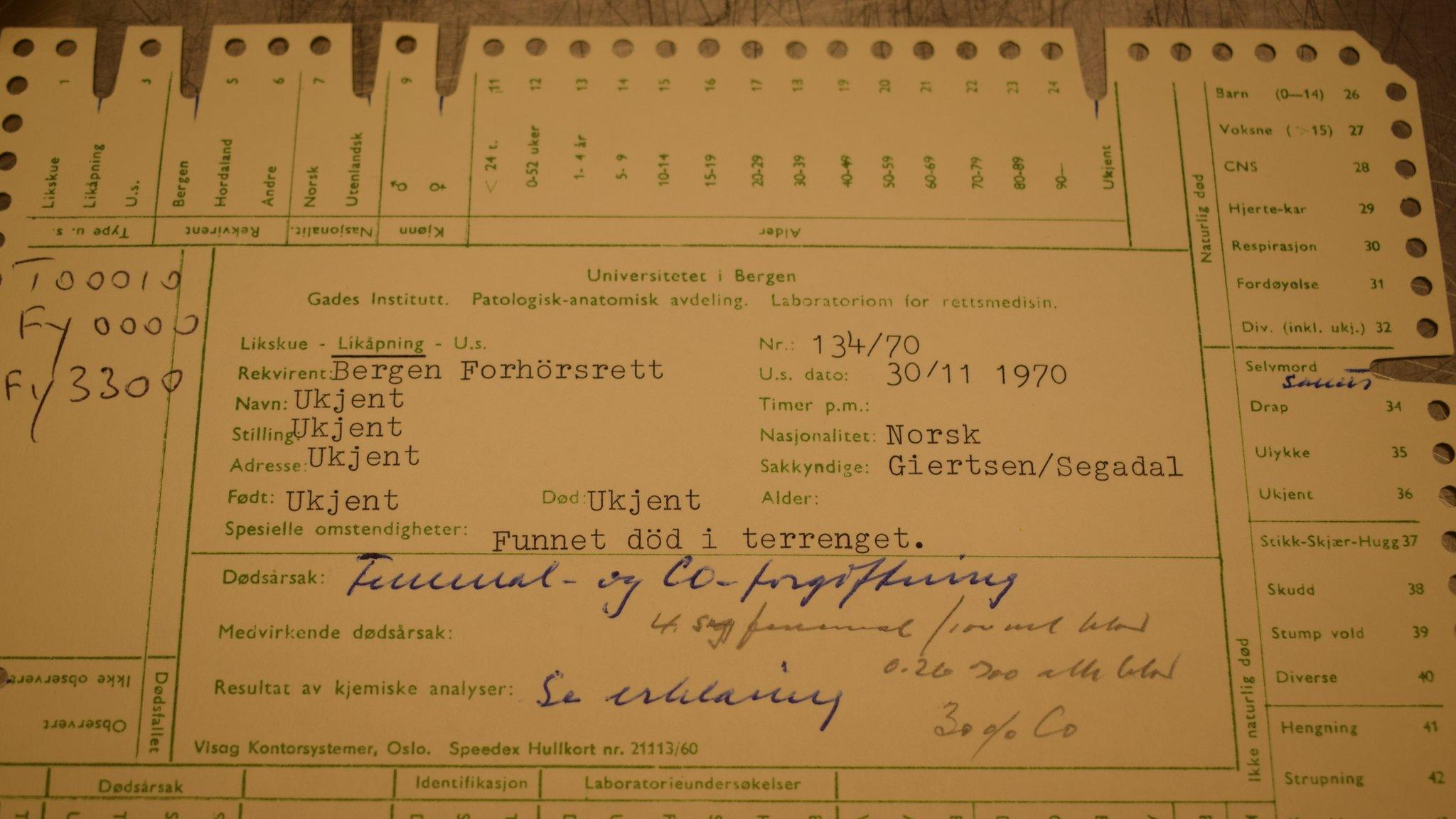
One of the forensic cards summarising the autopsy findings. The woman's name, position, address, date of birth and death are all listed as "unknown".
Her death is likely to have been a painful one.
"There were smoke particles in her lungs… which shows that the woman was alive while she was burning," Tormod says.
He found a trace of petrol in the ground below the woman's body, which means "we can state with certainty that petrol had been used" to set her alight.
She had a high concentration of carbon monoxide in her blood.
Experts also establish that there were about 50-70 sleeping pills, from a foreign brand called Fenemal, in her stomach - although they had not been fully absorbed into her bloodstream before she died.

Police distributed the woman's fingerprints via Interpol
The autopsy concludes the woman died from a combination of carbon monoxide poisoning, and ingesting a large number of sleeping pills.
The cause of death is announced to be a probable suicide - a view supported by Bergen's chief of police.
But many people find this hard to believe.
"We talked about it in the police, but as far as I remember very few thought it was suicide," Carl Halvor Aas says.
Both the remote spot where her body was found - and the method of suicide, by fire, strike him as strange.

"I do not believe it was suicide" - Carl Halvor Aas
Without any further leads, the case is closed, and the woman is buried in February 1971.
Police think the woman may be Catholic, and organise a Catholic funeral for her.
According to a police report of the funeral, the coffin was decorated with lilacs and tulips, and the priest conducted a simple ceremony for "the unknown woman, who was put to the grave in a foreign country without any family present".
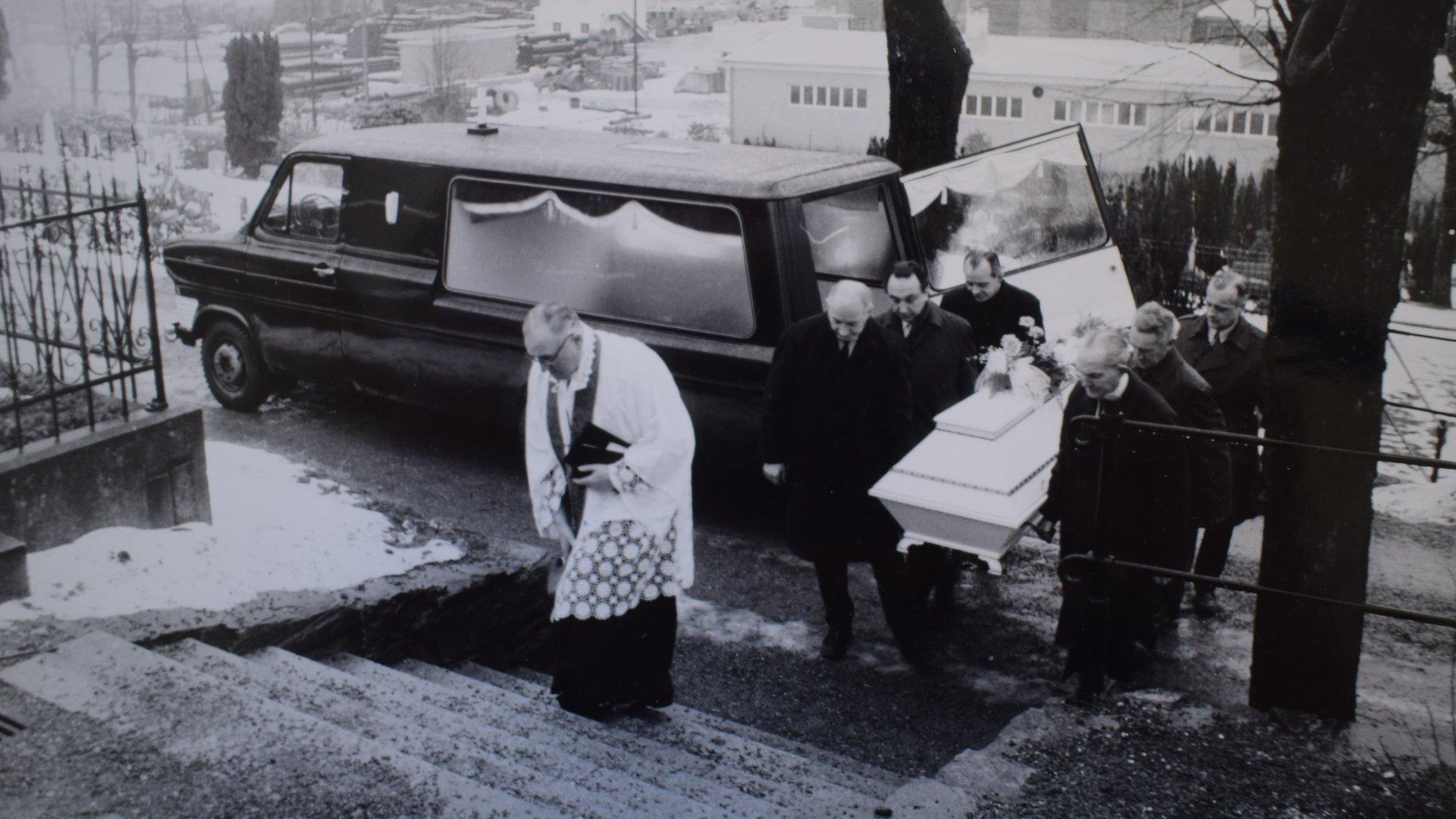
The funeral was attended by police officers
Police still hope to find the woman's family - she is buried in a zinc coffin that won't decompose - and keep an album of photos from the funeral for her relatives.
Harald Osland was one of the investigators reluctant to let the case go.
"My father could never put this case away," his son, Tore, says. "He never could accept that they had to close down the case."
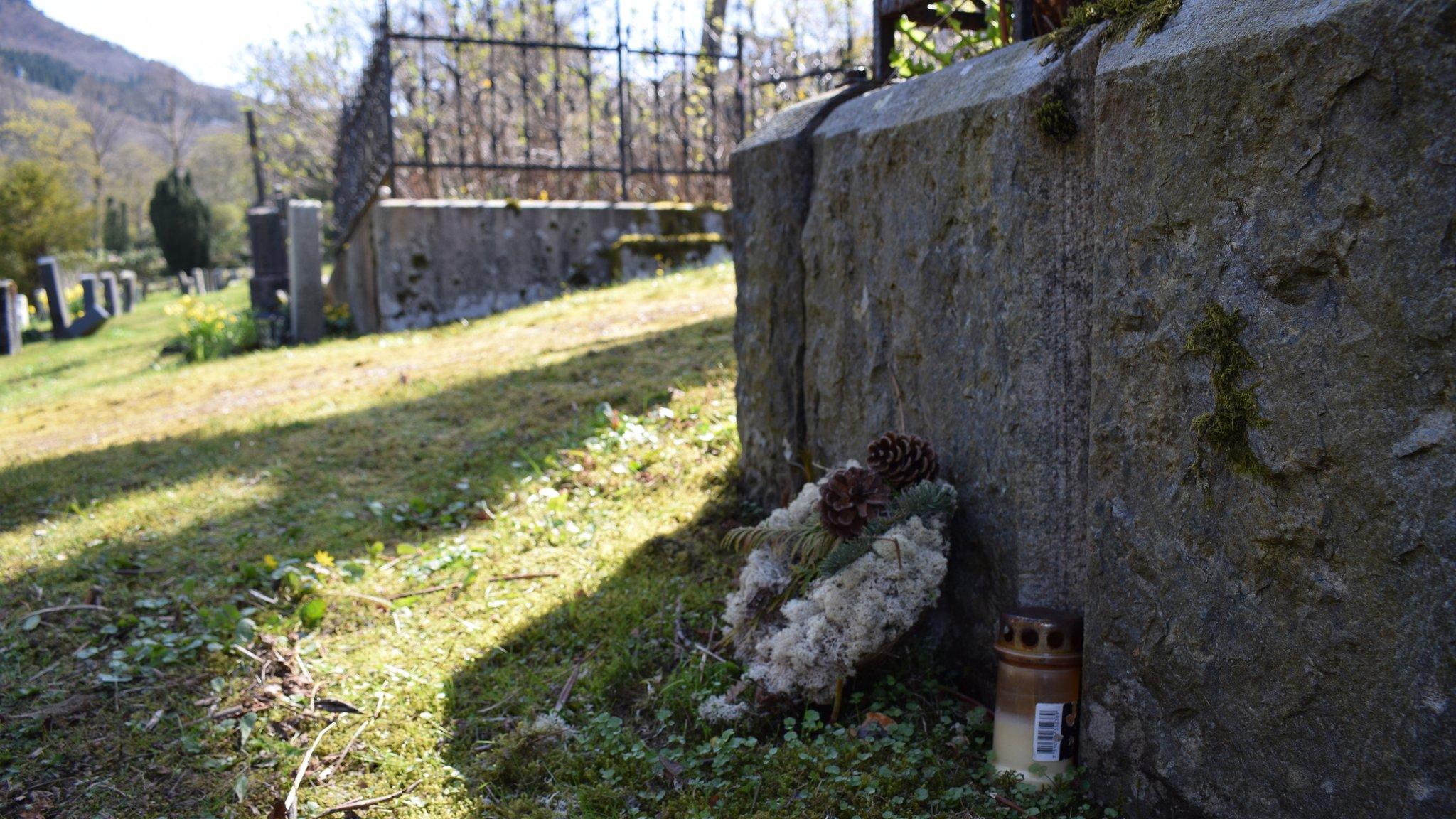
The unmarked grave where the Isdal Woman's body is buried. The site is marked with a small wreath and candle
His father kept several of the police documents, and Tore eventually wrote a book about the Isdal case.
Over the years, the case has also inspired several crime writers and illustrators.
"What intrigues people is that it is an unsolved mystery - it is almost like following a crime novel," says Gunnar Staalesen.
Norwegian crime writers explain the appeal of the Isdal Woman case
Then, in 2016, the possibility of solving the case rears its head again.
Clue eight: The teeth
The Isdal Woman had distinctive teeth - 14 of them were filled - and she had several gold crowns. This was especially unusual for someone in her age range - and is not the type of dental work seen in Norway.
Gisle Bang, a professor of dentistry, keeps the woman's jaw, in the hope that other experts will recognise the dental work.
After his death, everyone assumes the jaw has been destroyed.
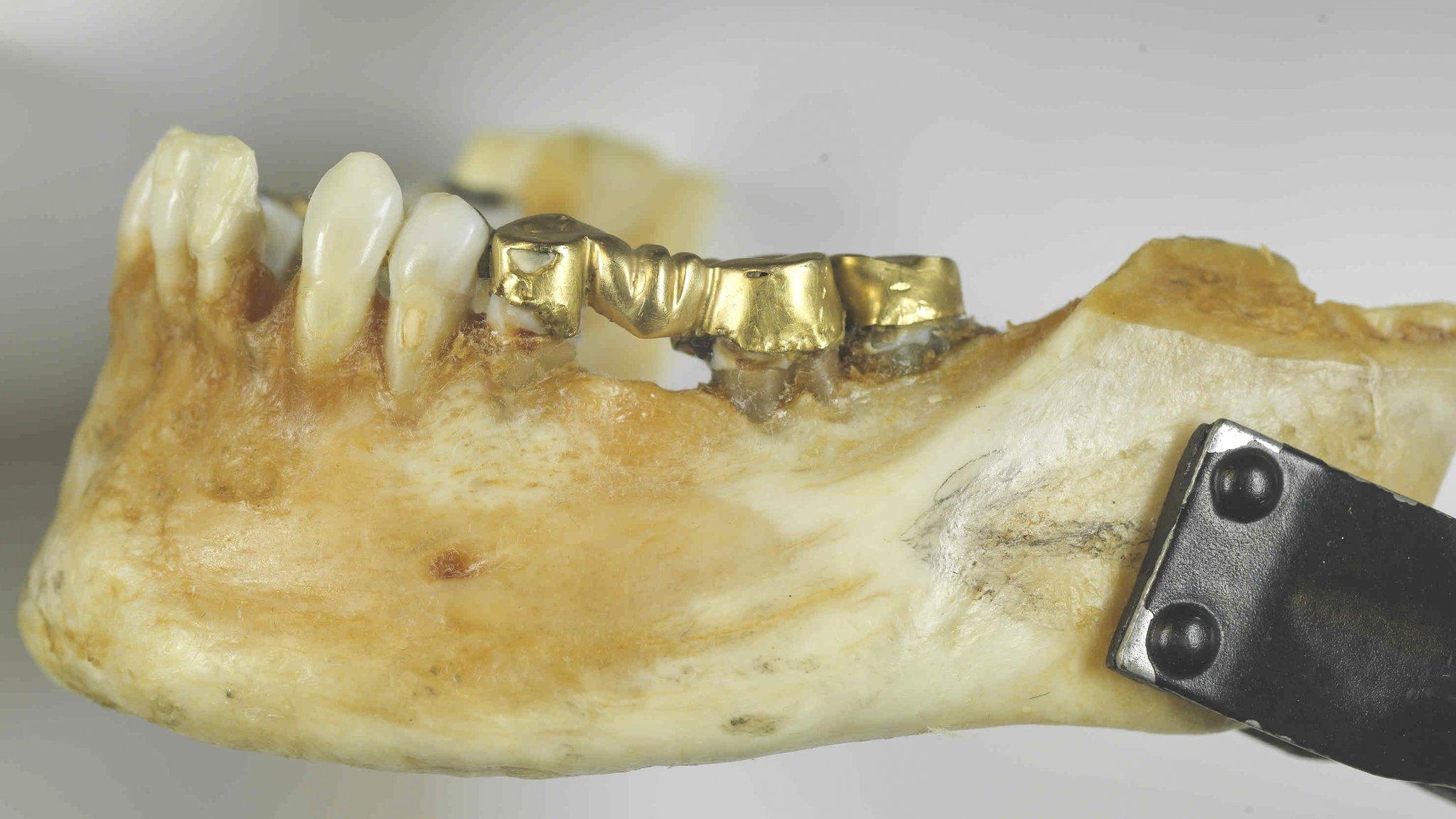
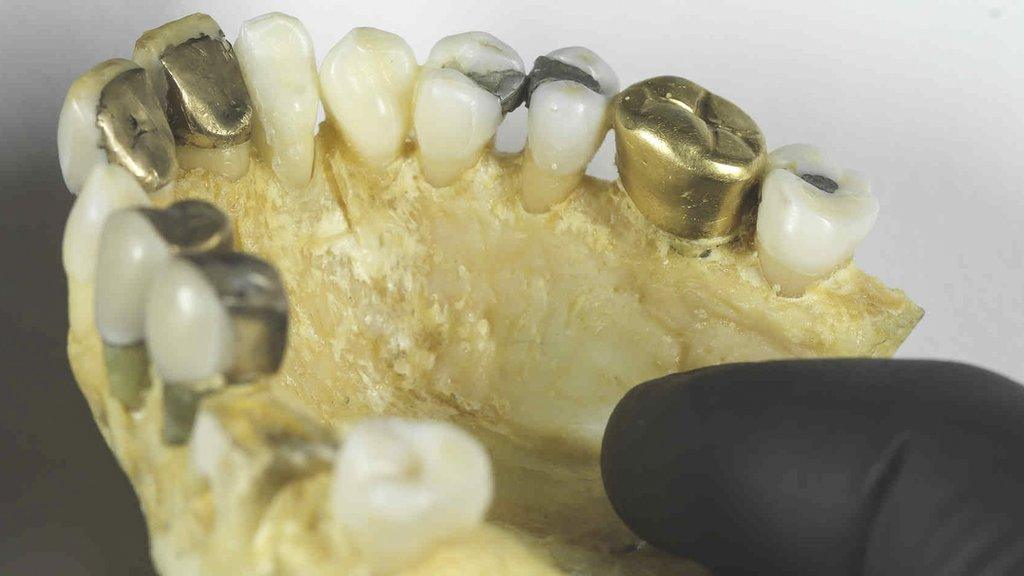
Forensic doctor Inge Morild, who inherited the Isdal Woman files, says he was told the jaw had been "thrown away because it was smelling".
But after investigative journalists at NRK make queries about the Isdal Woman, Prof Morild finds the jaw - deep in a cellar in Haukeland University Hospital's forensic archives.
The find gives Norwegian police the opportunity to re-open the case, and use the latest forensic techniques to try and identify the woman.
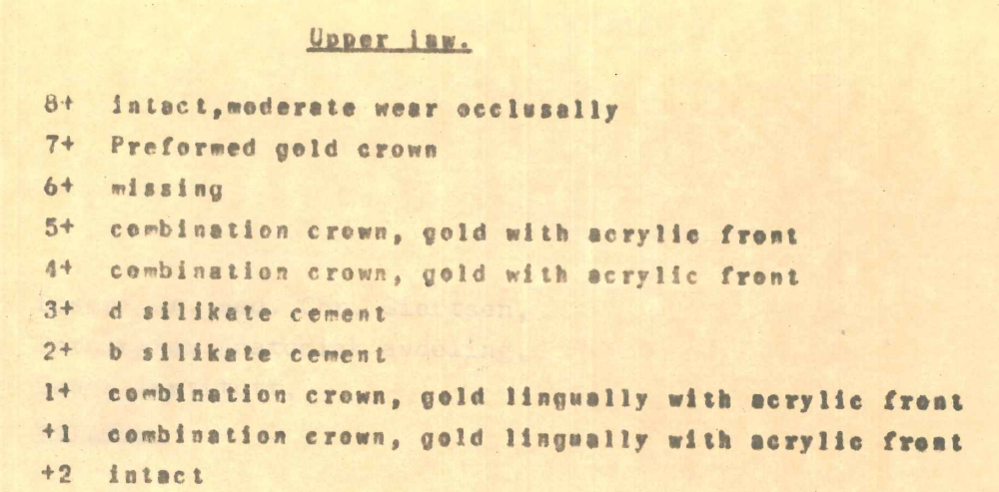
Prof Gisle Bang had sent reports to international dental experts
The Norwegian Criminal Investigation Service (Kripos) and University of Bergen start conducting isotope analysis on her teeth - looking at the chemical "signature" left by the elements that made up her teeth as they were being formed.
The tests involve:
Oxygen isotope analysis, which can reveal the type of water the woman drank as she grew up - and which areas the water came from.
Strontium isotope analysis, which can reflect the types of food the woman ate, and the type of soil in the area where she grew up.
It's the first time Norwegian police have conducted isotope analysis on teeth - but they hope the findings will help them pinpoint the region where the woman lived.
Clue nine: The tissue samples
DNA analysis is now one of the key tools police use in forensic analysis and identification cases.
It didn't exist back in 1970.
But it turns out several tissue samples from the woman's organs, including from her lungs, heart, adrenal gland and ovaries, have been stored at Haukeland University Hospital.
Prof Morild says it "has been a custom in most of Norway" to keep tissue samples from post mortem examinations. The samples are "useful for repeat examinations, and as a source of DNA".
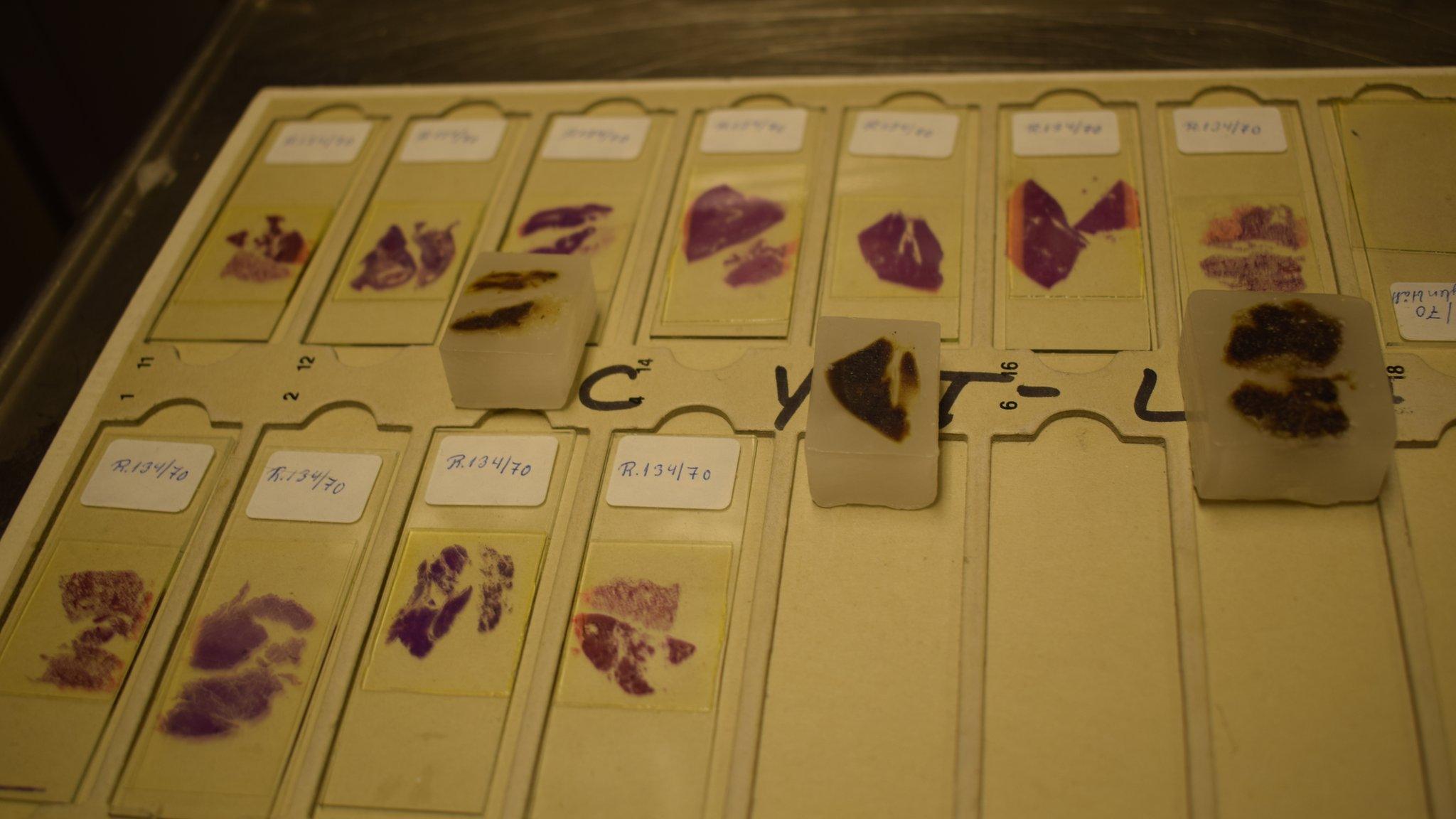
Tissue samples from the organs are preserved in paraffin blocks
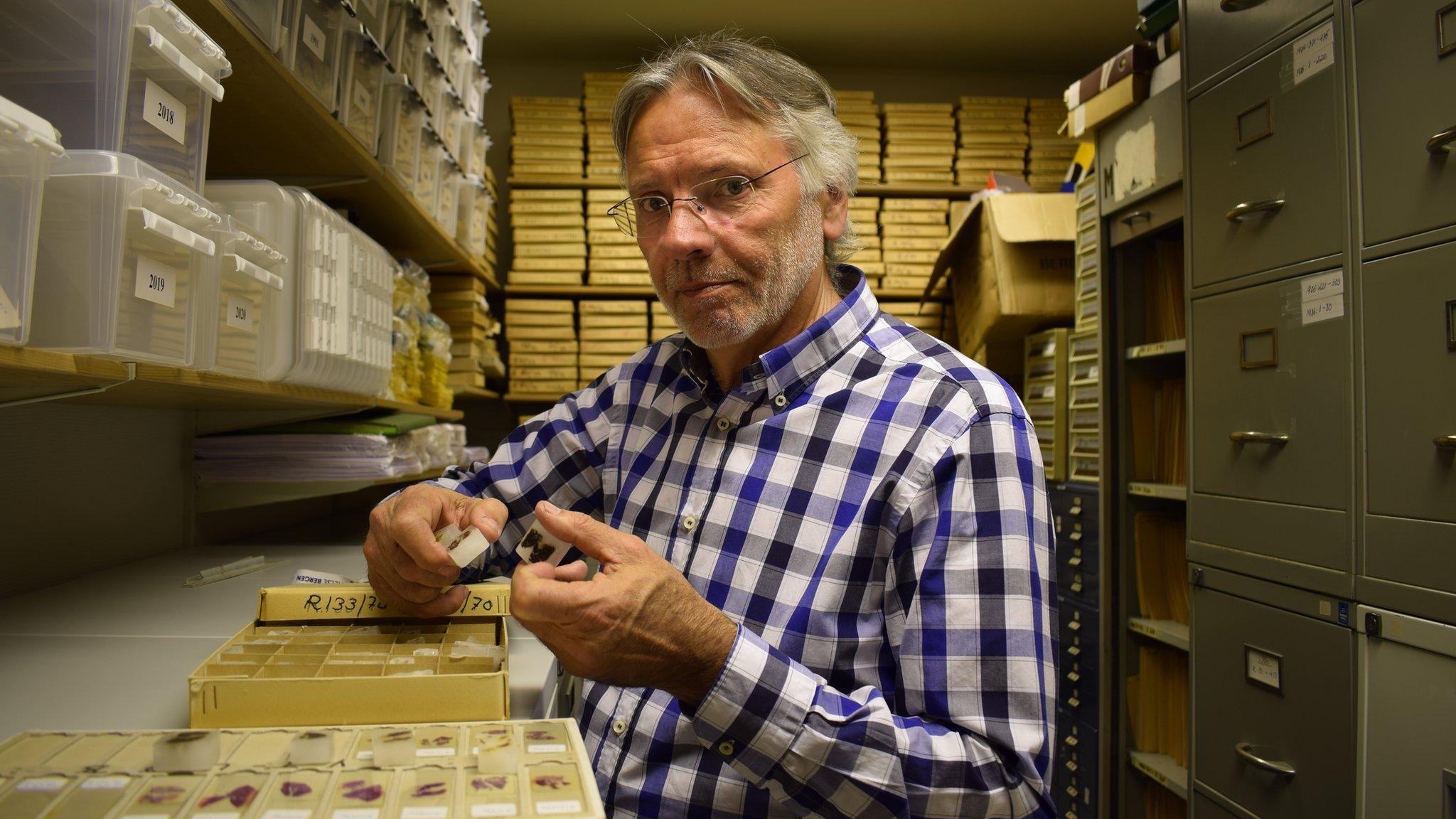
Prof Inge Morild looks through tissue samples belonging to the Isdal Woman
NRK and local police agree to send the samples off for DNA analysis.
Nils Jarle Gjøvåg, head of forensics at West Police District, says it's important to pursue the woman's identity because "somewhere in the world, there may be some relatives wondering where she went".
"We try to identify every unknown body, so that relatives can have an answer."
While they wait for DNA results, NRK publish a documentary into the investigation - and receive more than 150 tip offs from people interested in the case.
"In Norway, this case is a big enigma for people… there's a lot of people who want some sort of closure in the case," says journalist Ståle Hansen.

NRK's investigative team (from left to right): Marit Higraff, Eirin Aardal, Øyvind Bye Skille and Ståle Hansen
After months of work, scientists have an extended DNA profile of the woman. The latest results, published on Friday, show the woman was of European descent - making the theory that the woman was an agent from Israel much less likely.
Norwegian police are set to issue an Interpol black notice - which seeks information on unidentified bodies - with the new information.
European police forces will be asked to check their DNA databases to see if they find a match.
"If someone in her close family is in a DNA registry somewhere, we will get a hit," says Ståle Hansen. "That would be really exciting."
The Isdal Woman case has been unsolved for the last 46 years. But now, modern science has reopened the possibility of this elusive Nordic mystery being solved.
Readers who recognise the Isdal Woman or want to share tips about the case of the Isdal Woman can contact the NRK investigative team, external via their website.
Additional research by Johanna Keskitalo
All pictures copyright